Thailand’s rose of the north has something for everyone.
Though Chiang Mai may appear unassuming at first sight, it doesn’t take much to uncover the hidden charms of Chiang Mai.
Chiang Mai is a city steeped in history but it is also very much abuzz with activity that attracts art lovers, foodies, fashion-conscious shoppers, connected professionals and those just looking to get away from it all without giving up the creature comforts of a modern city.
Its name means “New City” but the capital of the ancient Lanna Kingdom traces its roots back over 700 years. To enter the old town, visitors still have to cross the moat that protected the fortified city (not always successfully) from invasion. These days, what the friendly invaders from distant lands find inside and outside the ramparts is a city that strikes a balance between the Chiang Mai of yesterday and the thriving city of today.
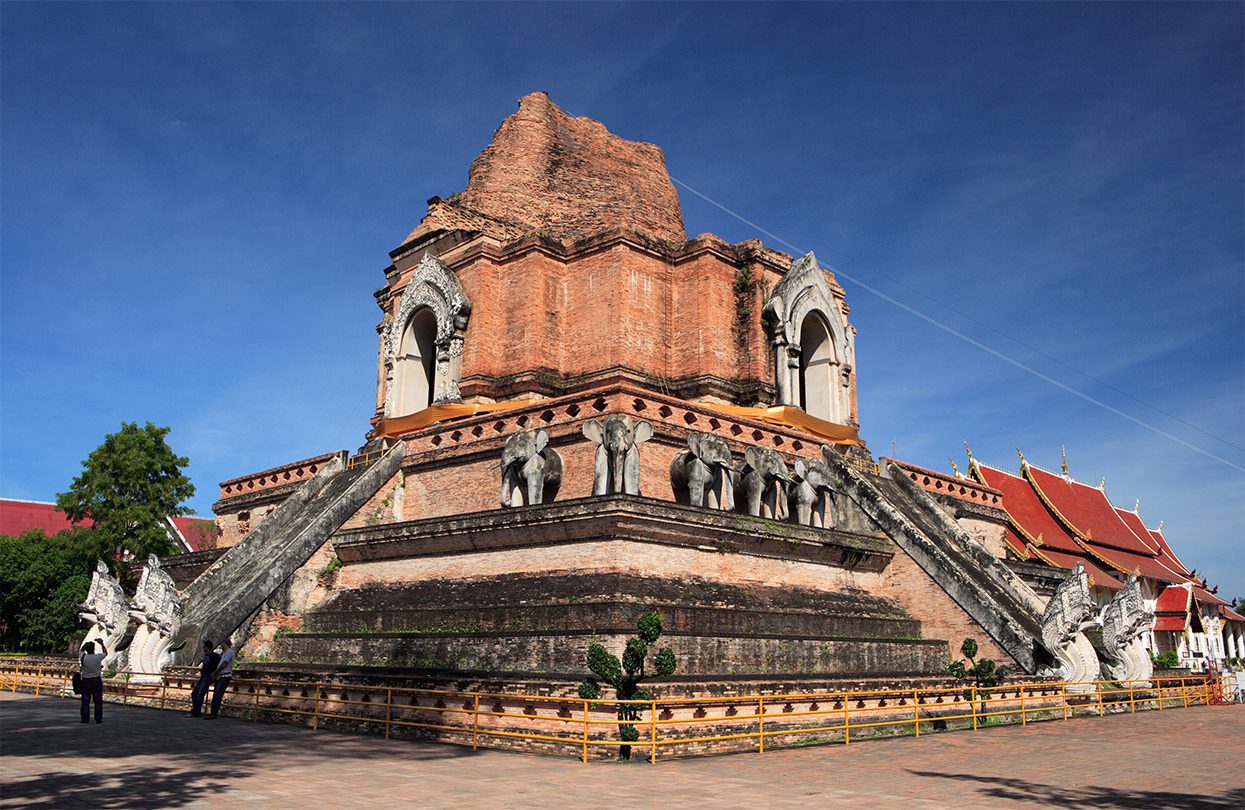
At the centre of Wat Chedi Luang is the stupa that was once the largest in the Lanna Kingdom
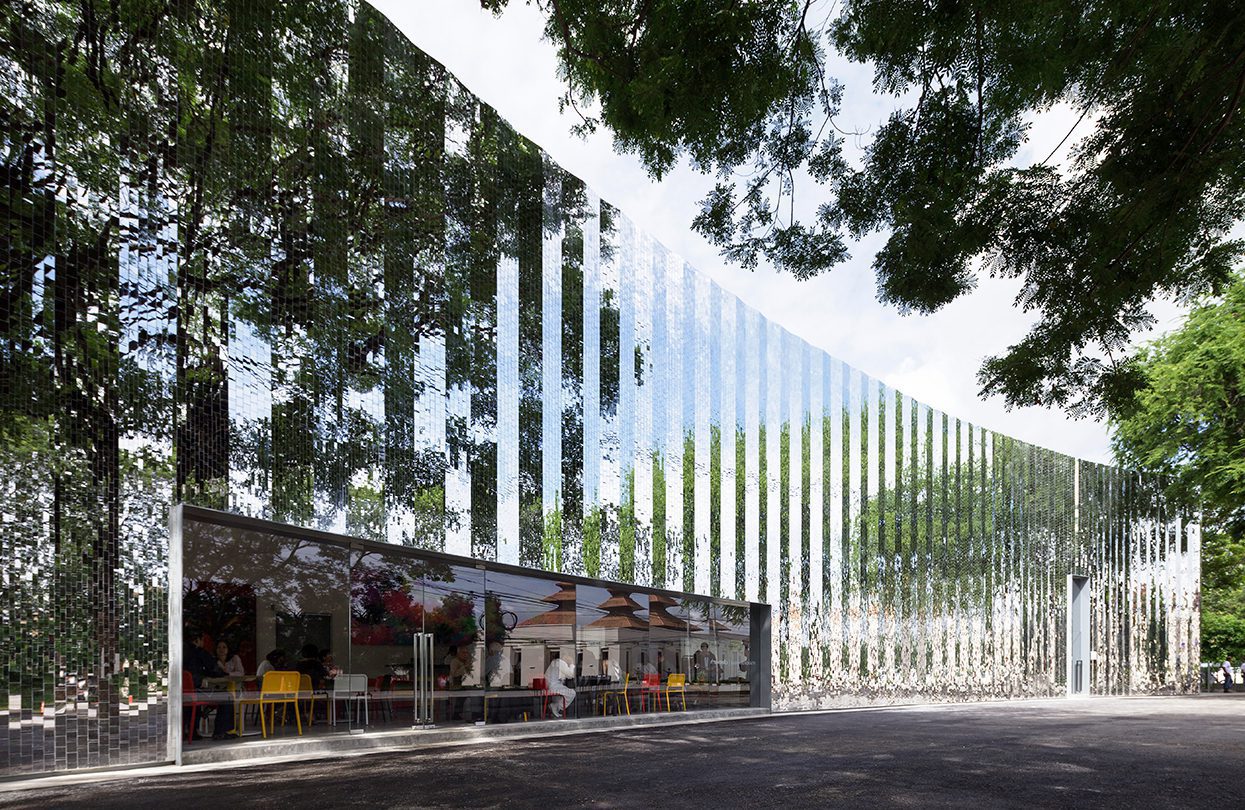
MAIAIM has quickly become a landmark on the Chiang Mai arts scene
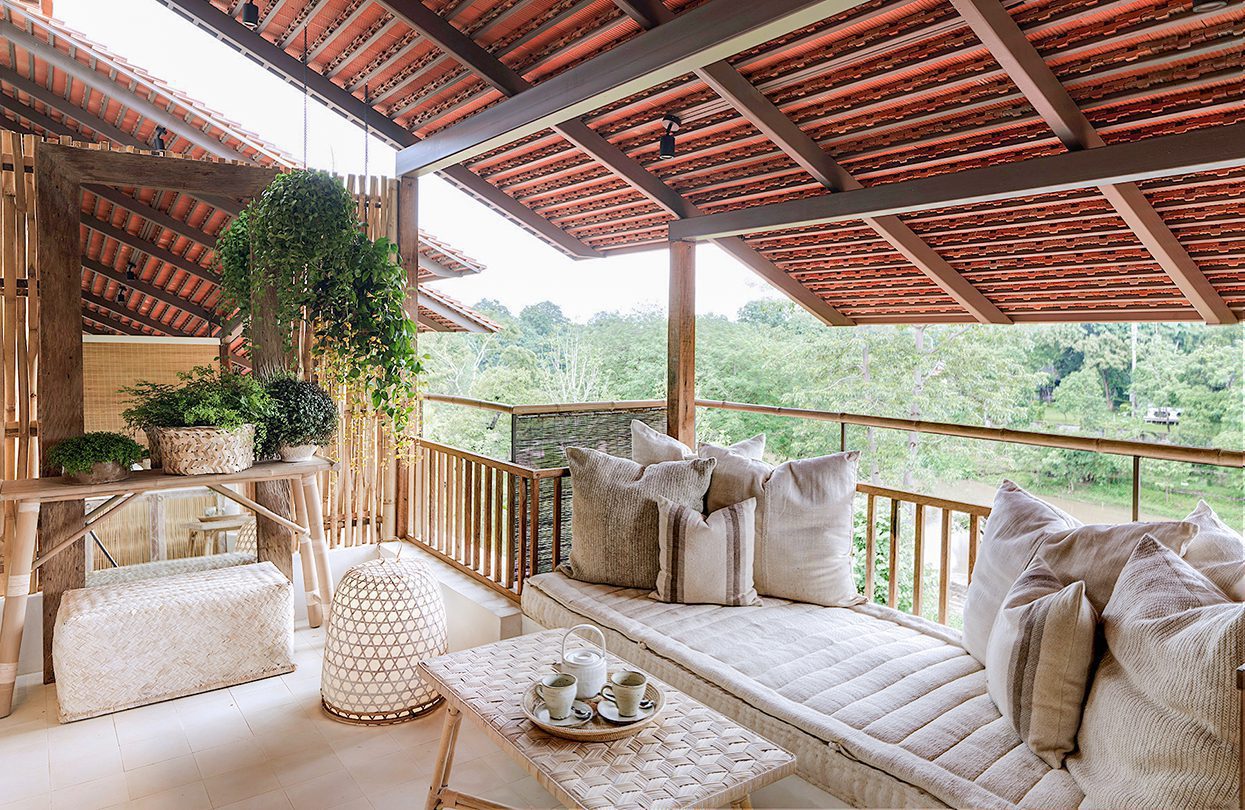
All thirty-three suites at Raya Heritage look out over the Ping River
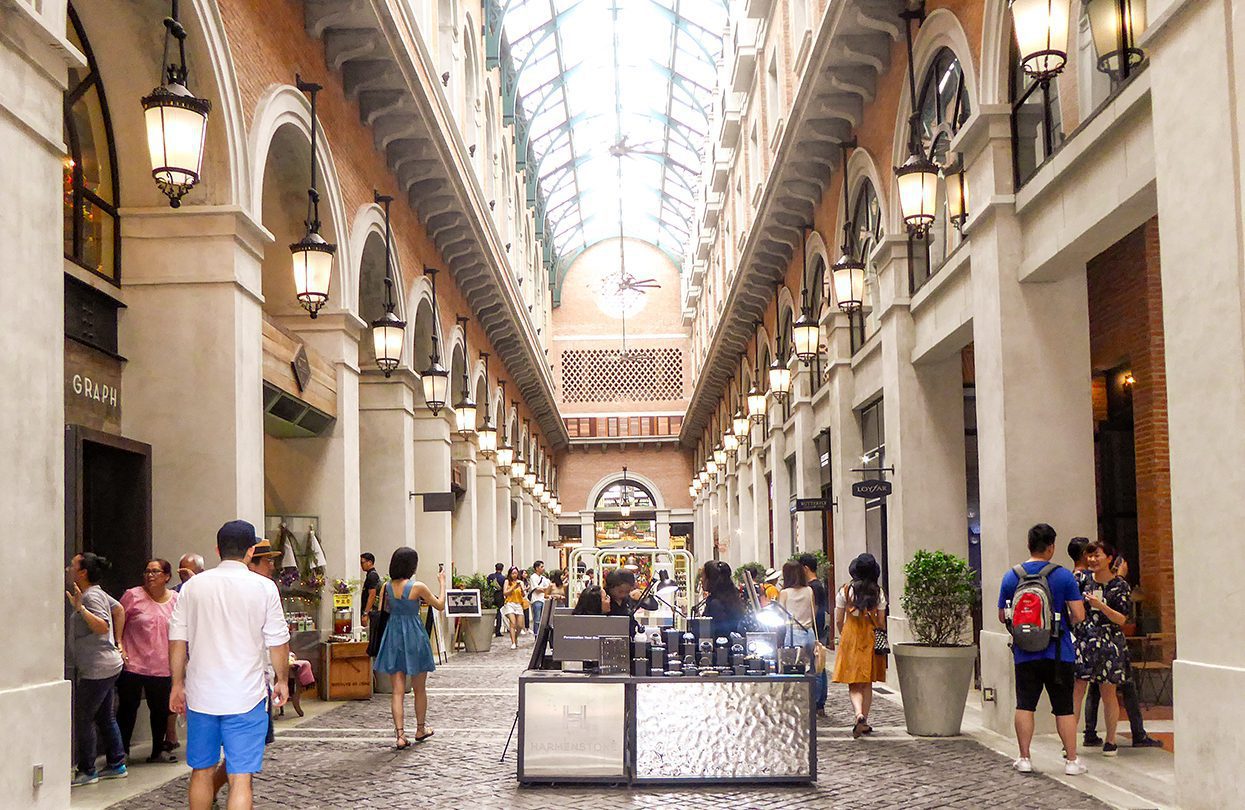
Shoppers flock to One Nimman in popular Nimmanhaeman
What to see
Many people use Chiang Mai as a base to explore the region. They go trekking, climb DoiInthanon (Thailand’s highest peak) or make merit at Wat DoiSuthep, a temple famous for its Buddha relics and its views over the city. But visitors need never leave the city proper to explore its treasures. Chiang Mai counts some 75 temples in the Lanna, Burmese and Thai styles just within the city walls. Wat Chedi Luang and Wat Phra Singh are deservedly among the most visited holy sites, but many others like the 17th-century white teak Buddha in Wat Buppharam are also worth a visit.
Chiang Mai is also resolutely turned towards the future and nowhere is that more evident than in the city’s art scene. The MAIIAM started as a showcase for the private collection of the family of Eric Bunnag Booth but has morphed into a world-class museum of contemporary art. The space hosts exhibitions from Thai and international artists and won the coveted Best New Museum in Asia Pacific award in 2017.
TCDC Chiang Mai, the northern branch of the Thailand Creative and Design Center, also showcases contemporary culture and design through exhibitions and workshops. Its library serves as a co-working space frequented by locals and Chiang Mai’s growing population of digital nomads.
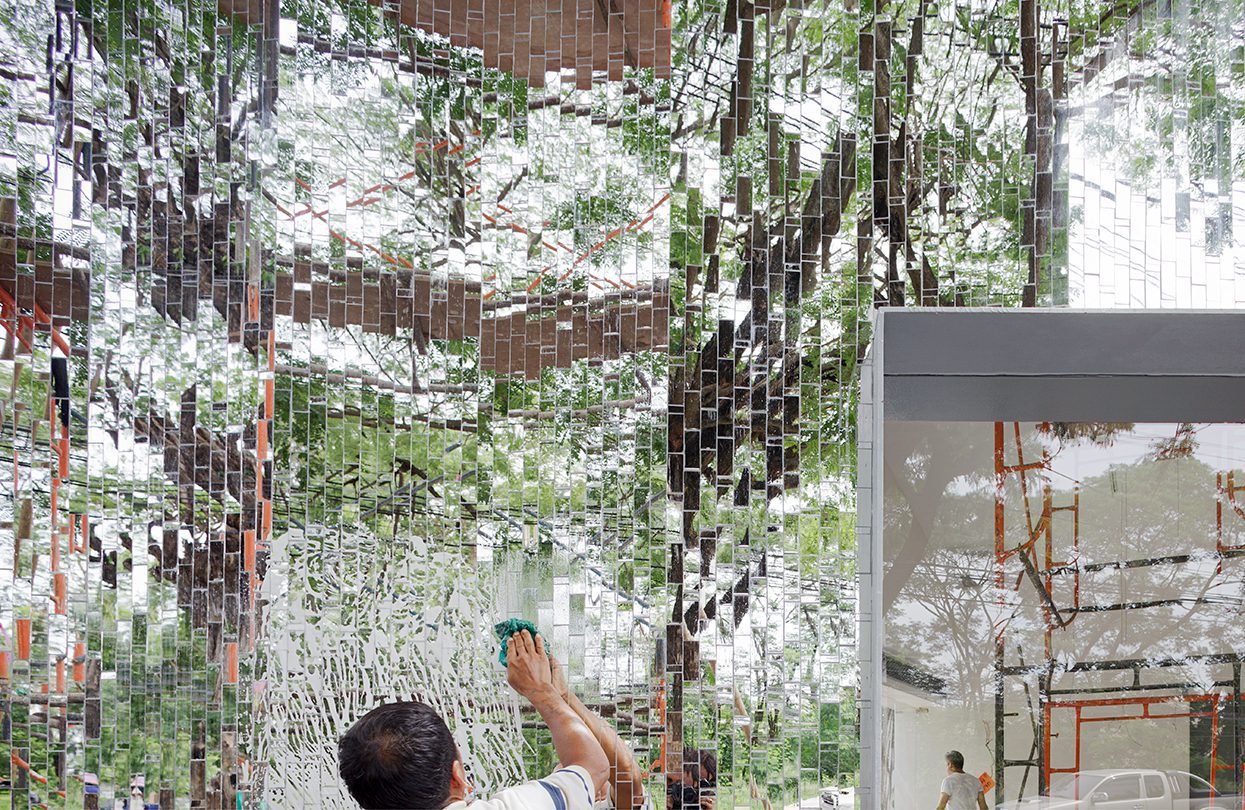
MAIIAM’s mirrored façade was the work of Bangkok-based architects all(zone)
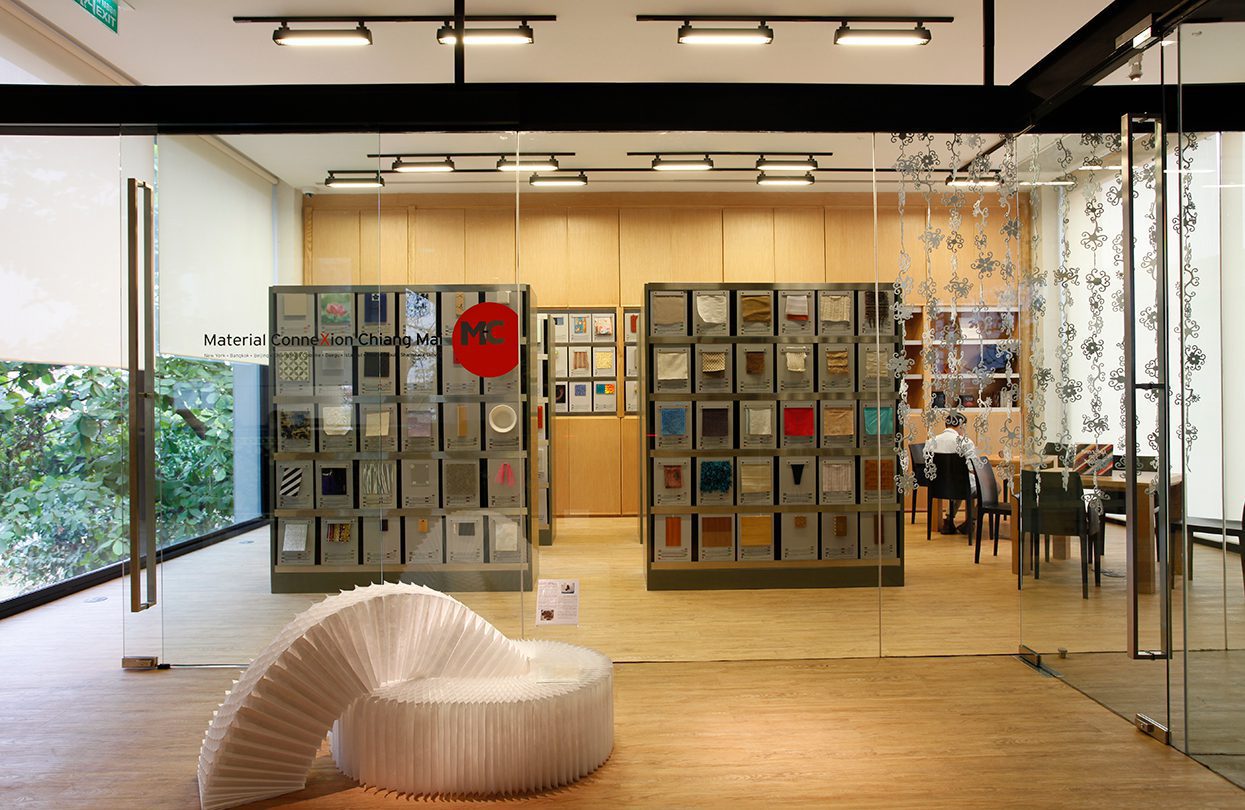
TCDC Chiang Mai attracts digital nomads, students and curious visitors
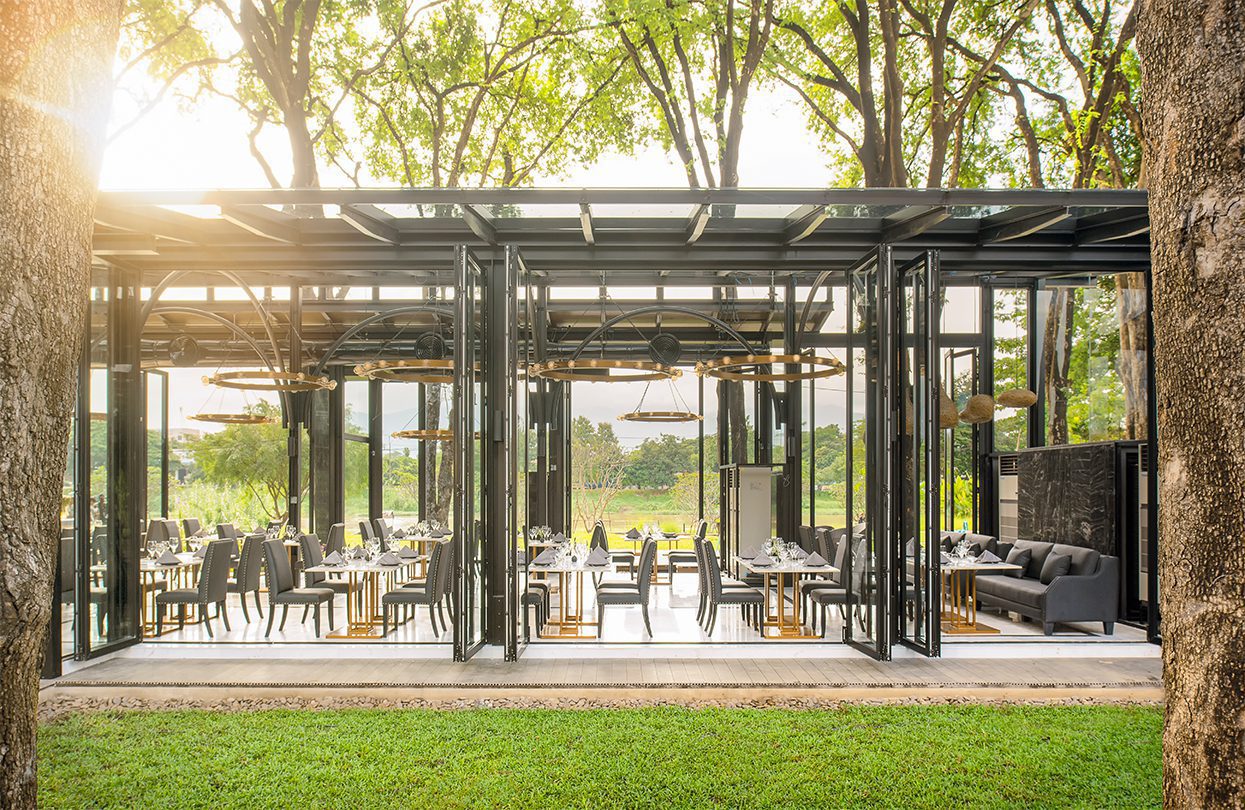
A dramatic glass structure houses Oxygen Dining Room
Unique Souvenirs
Daily markets like Warorot will yield all manner of household goods like the hefty shallow brass woks that come in various diameters and are used for everything from soups to desserts. The Friday morning market known as Kad Chin Haw perhaps best illustrates what an important crossroad Chiang Mai was for Chinese, Burmese, Indian and Muslim traders, as well as for local hill tribes. Imported tea and spices sit beside mounds of foraged jungle fern or crosnes (also known as Chinese artichokes) for shoppers who munch on black sticky rice pancakes.
The decidedly more genteel One Nimman complex caters to a cosmopolitan audience who haven’t lost sight of their local roots. Shops like Greenies and Co. use locally woven fabric from Lampang and natural indigo dye to make their stylish bags. Husband and wife team Morakot Yostamrong and Piyarat Tangmayteekul, who both attended the Fine Arts School of Chiang Mai University, are proud that their products are designed and produced with local knowhow. “We like to show our creativity and handicrafts of northern Thailand,” says MsPiyarat.
Another local designer who has demonstrated his creative use of local resources is Patipan Suwanpattana, whose stark white Yen Maker showroom in the middle of old Chiang Mai provides the perfect backdrop for his sleek handcrafted jewellery. The stunning pieces combine silver that he fashions in the workshop above his shop and exotic ebony, champa and kanoon (jackfruit tree) woods.
Back at One Nimman next door to Greenies, a branch of Monsoon Tea highlights yet another local treasure. Tea is indigenous to the region and the mostly highly prized variety is still harvested by hand from wild trees in the jungle that are 1500 years old. Unsurprisingly such a rare product comes at a price, but other high-quality cultivated teas are also on offer.
One Nimman may be the new kid on the block but Srisanpanmai definitely is not. Located just across the alley, Khun (Madam) Anchalee has been promoting local textiles from around the region in this modest shop crammed full of fabric for 26 years. Some of the works are veritable museum pieces and Khun Anchalee, herself a collector, is only too happy to display some of her most valuable works in the rooms upstairs.
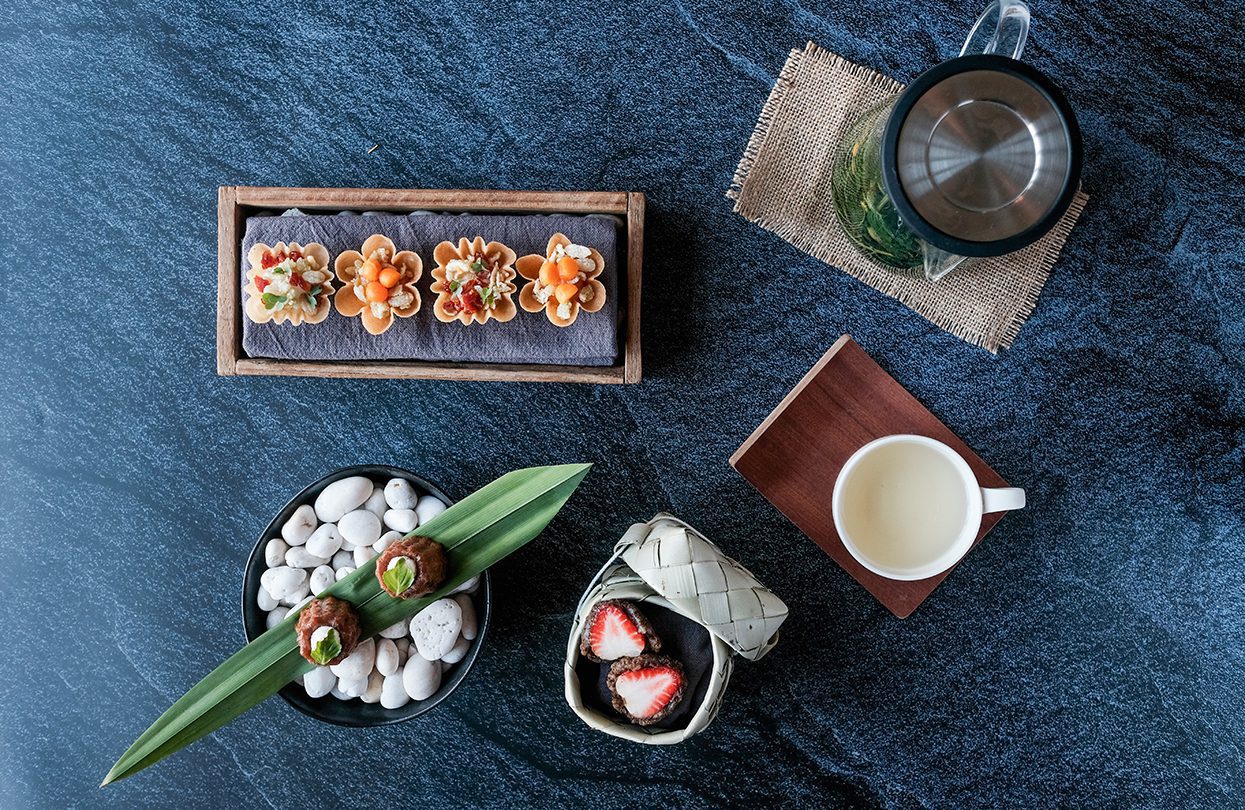
Petits fours at Cuisine de Garden
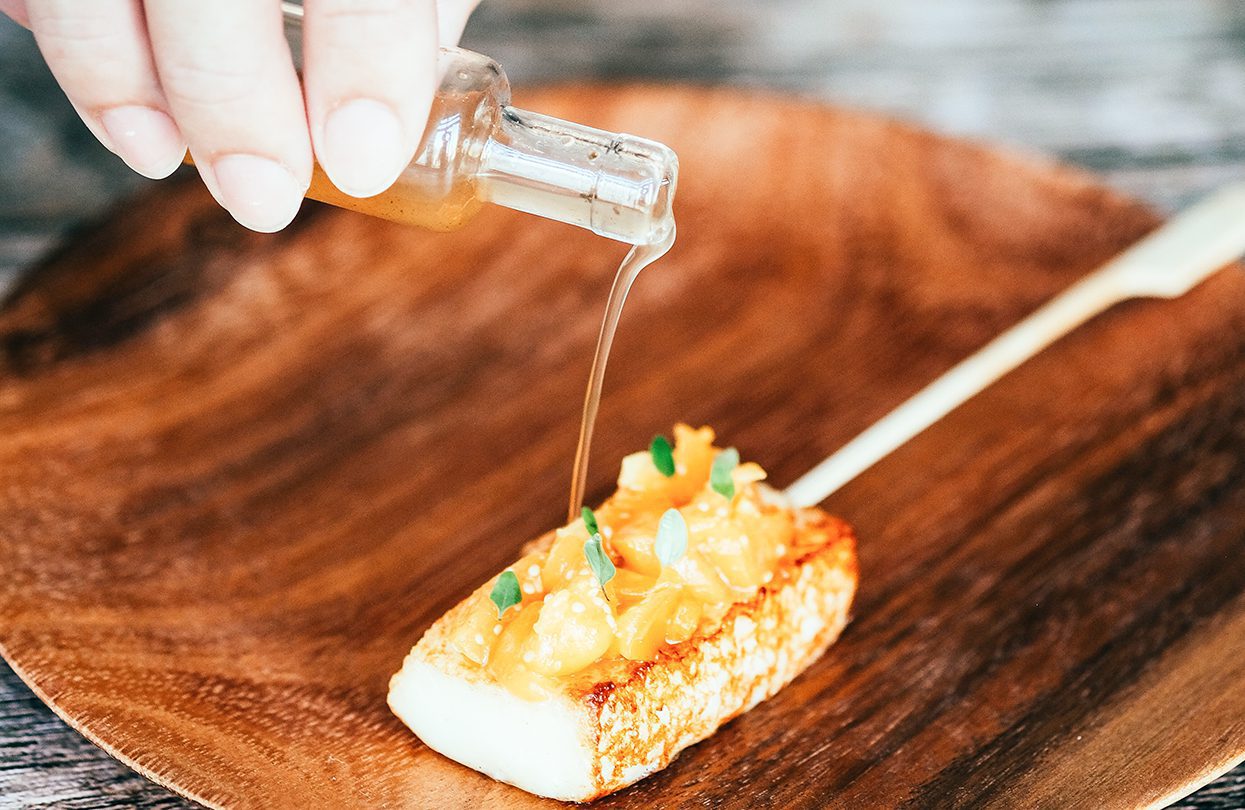
Grilled halloumi is one of the many treats on the tasting menu at Cuisine de Garden
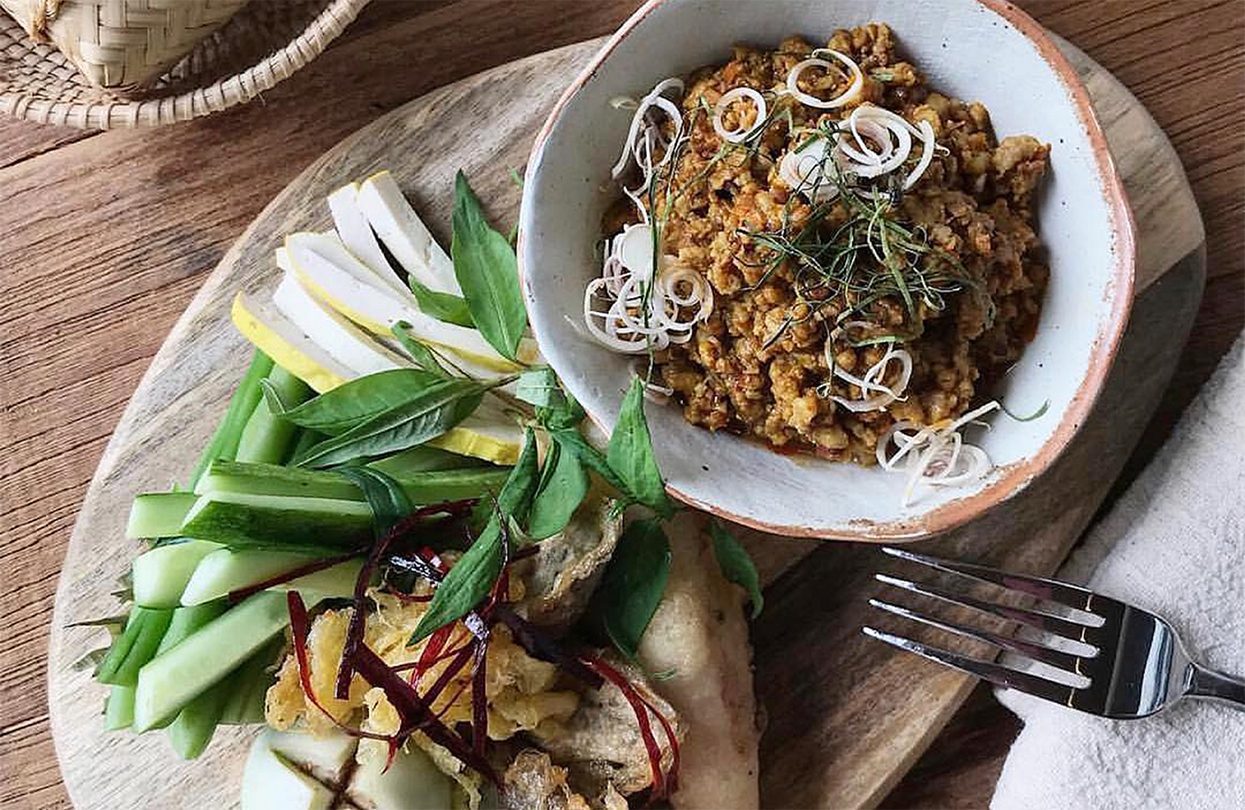
Prahok Ktiss restaurant serves dishes inspired by the cuisines of the region like this Prahok Ktiss, a Khmer dip made of salt-cured river fish
Dinner Is Served
The Michelin Guide Thailand will publish its third edition this year and for the first time the red guide will include restaurants in Chiang Mai. While we can only guess who will get an auspicious nod, there is no shortage of contenders who could make the cut.
Since he opened Blackitch over six years ago, Panupol “Black” Bulsuwan’s drive has put him on the map as a chef to be reckoned with. If anything, his determination to promote the diversity of Thai cuisine has only grown over the years. “We visit and see the communities around Thailand and learn about their local wisdom,” he says. With his wife Anothai Pichaiyuth who also designs the desserts on the ever-changing tasting menu, he embraces rare season-sensitive ingredients like hed ta lo mushrooms that are served in a delicately fragrant broth. “They look like a giant tapioca, a little bit like bubble tea,” he beams. But dry weather has meant that foragers only were able to harvest them for two days this season so when supplies run out, there won’t be any more.
Oxygen Dining Room sits in a dramatic glass house on the banks of the Ping River. While the presentation wouldn’t be out of place on white tablecloths in Paris, Chef Alexandre Demard is adamant. “We don’t want to make a French restaurant.” Instead he draws inspiration from the produce he finds locally from excellent beef from Khao Yai to a dozen varieties of locally-grown mangoes. “We get inspiration from Chiang Mai and Thailand to experience a new kind of cooking.” The result is a dish like the squid stuffed with saioua, or flavour-packed northern sausage.
Cuisine de Garden Chef Leelawat “Nan” Mankongtiphan has been honing his culinary skills for years. Long before the words “fine dining” had been uttered in Chiang Mai, Chef Nan was serving spherified buttermilk. While some of his techniques owe more to science than to grandmother’s secrets, it’s no gimmick. “Everything that we do, we relate it to nature,” he states assuredly. And nature is at the heart of kitchen, like his smoked trout and aubergine or the greens from his garden.
Chef Phattanant “May” Thongthong is a familiar face to many Thai diners from her appearances on the local TV versions of Iron Chef and Top Chef. A lot of her early training came from her parents’ aahaan dam sang (stir-fries cooked to order) food court stand at her old university. “I found I was really happy in front of the stove, in front of the flame,” she recalls. But it took her years of setbacks and hard work before she got to where she is today. She became known for her own brand of fusion food but with the brand new My Bistro, her challenge is to refine the tastes of her native Chiang Mai. “I never forgot how to cook northern Thai food,” says Chef May. “I can use western techniques to extract the taste but basic is the best.” Her heady herb-packed broth with confit chicken is a shining example.
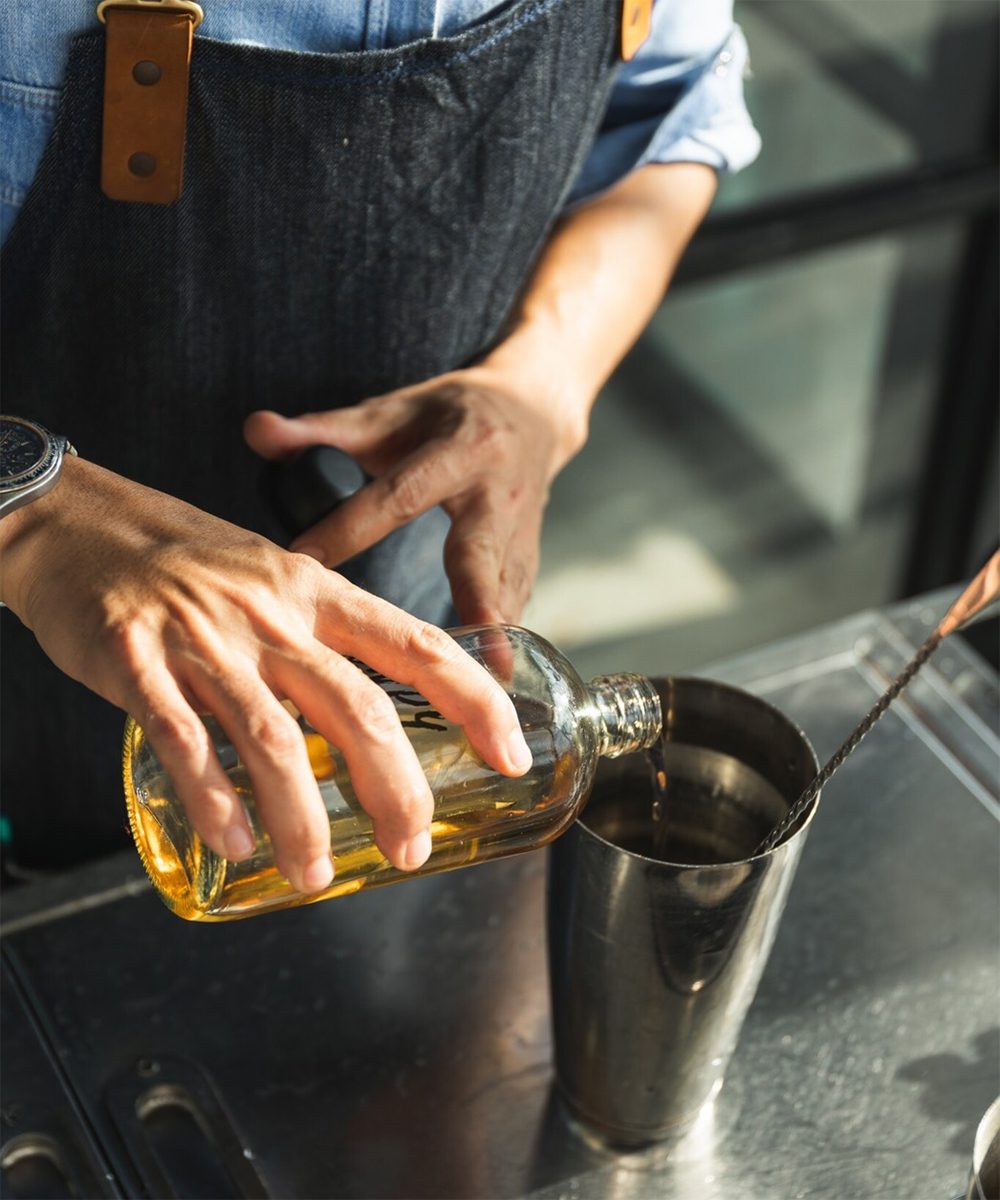
Friendly barmen officiate at Yayee’s comfy rooftop bar
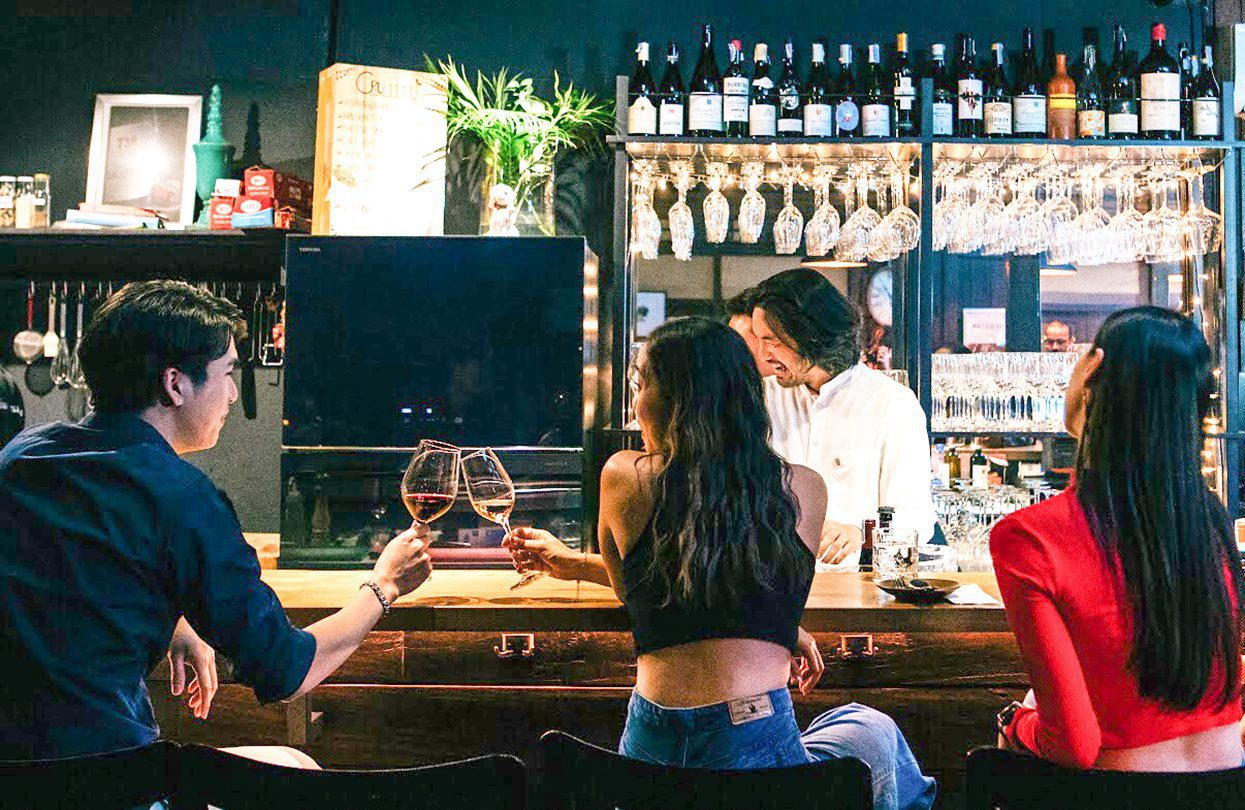
Cru’s ever-changing wine list features the owners’ latest finds
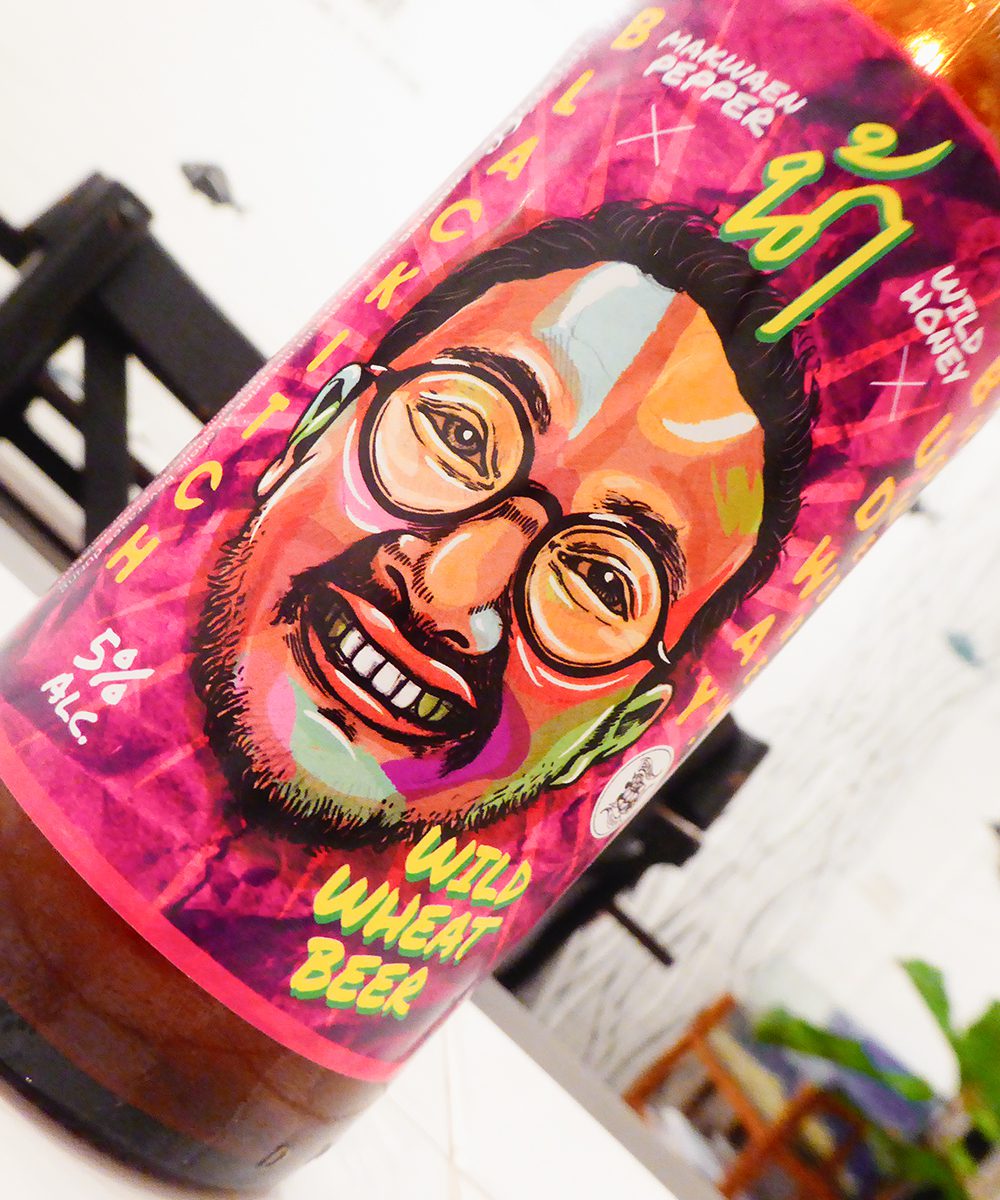
Ask for a bottle of Chef Black’s private label craft beer at Blackitch
Where to Have a Drink
Possibly the best place to enjoy the sun setting over DoiSuthep is the rooftop of the Yayee Hotel in trendy Nimmanhaeman, just to the west of the city walls. Owned and designed by Thai superstar and leading man Ananda Everingham, the rooftop terrace of this 14-room boutique hotel is a literal breath of fresh air, mixing shabby chic and signature cocktails like the Rosemary Smack made with in-house rosemary and orange infused vodka.
If wine is more your speed, Cru located right in the middle of the old town is the way to go. The wine bar offers an ever-changing list of carefully sourced wines that favours independent producers from both old and new world vineyards.
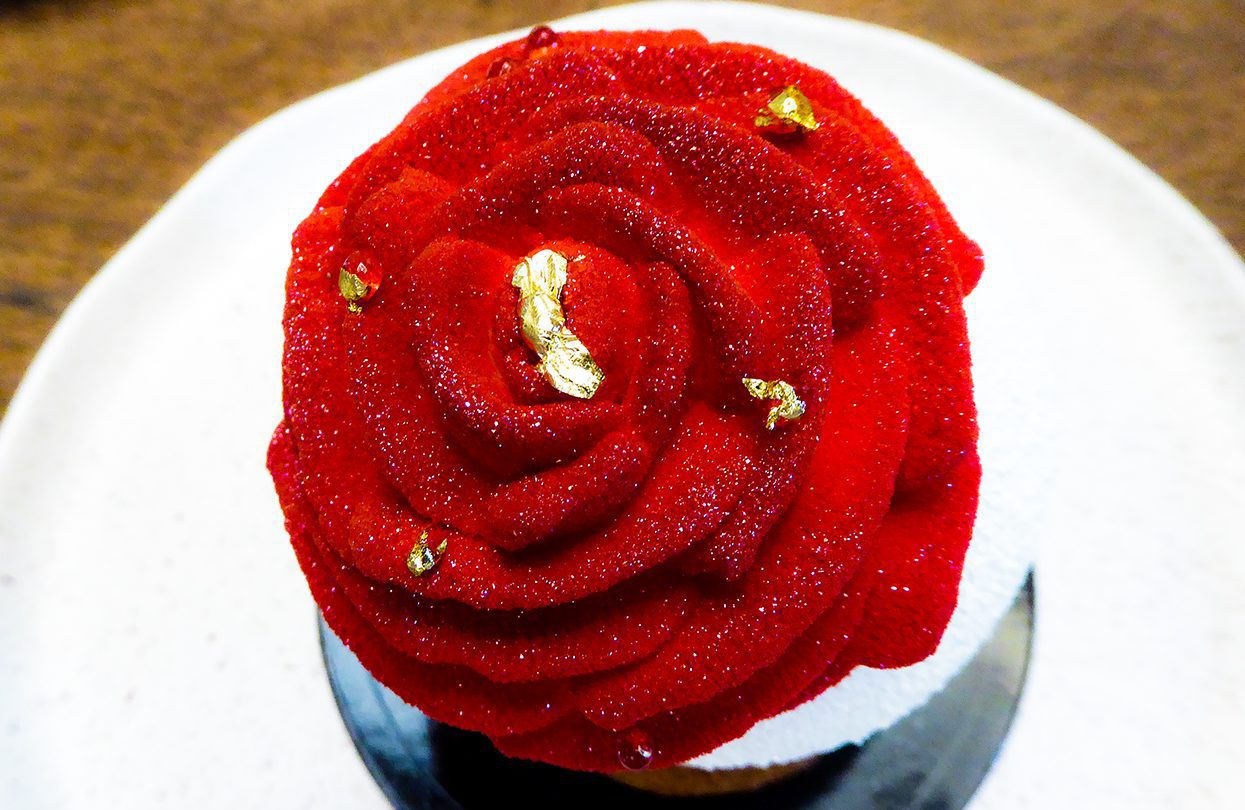
La Rose, a delicate composition of raspberry, lychee and rose, at Saruda
Satisfy Your Sweet Tooth
You’d be hard pressed to find better pastries than those served by Saruda, as delicious as they are exquisite to behold. Mousses, tartlets and other French-style delicacies made with yuzu, passion or mango can be washed down with beautiful blooming tea.
For a homier atmosphere on the Riverside on the other side of town, ever-popular Woo serves up cakes of the day set amongst cut flowers as well as a Thai and western savoury menu. Part café, part florist, part design shop, Woo is also a gallery space that features a changing selection of local artists.
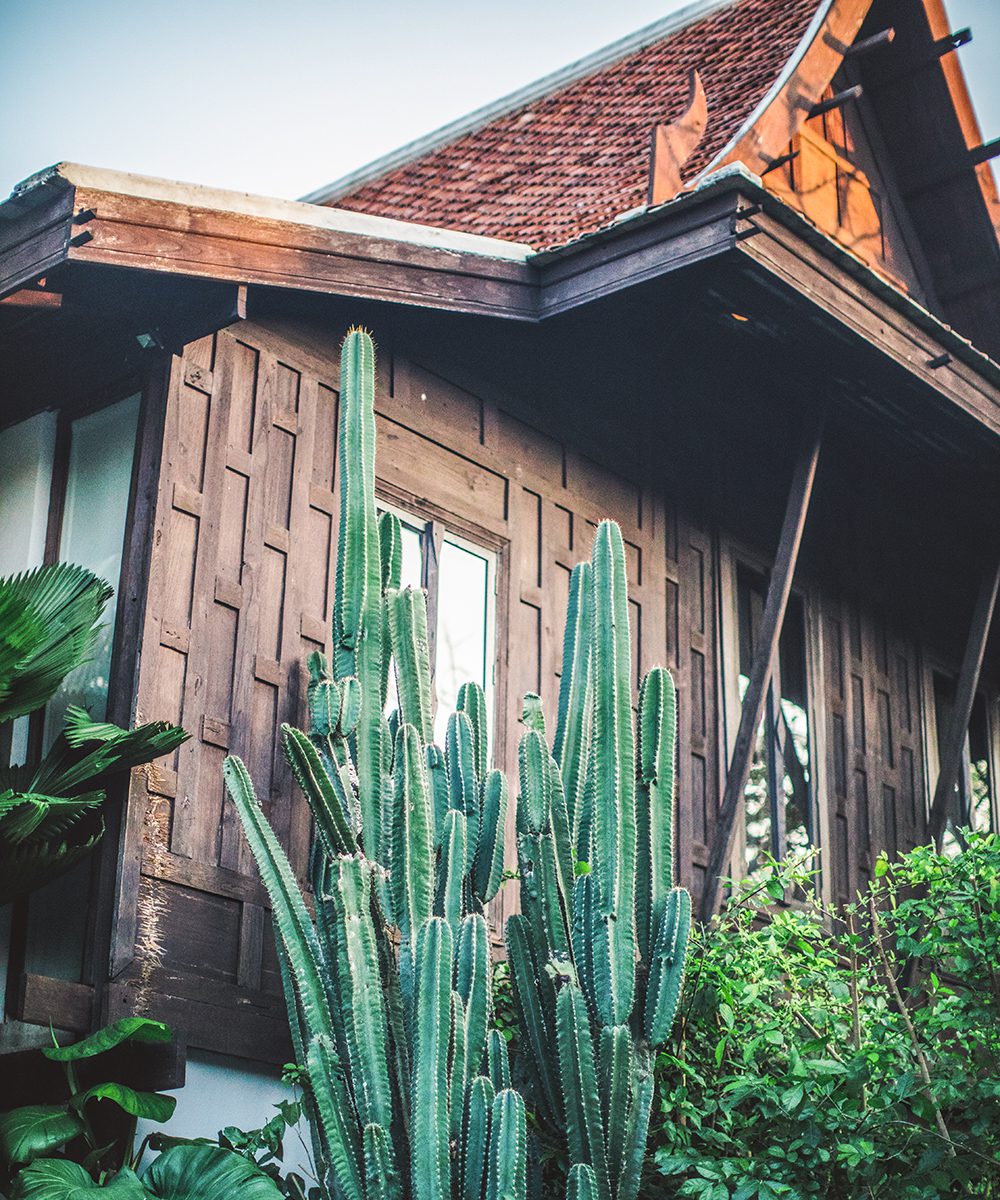
Secluded Villa Mahabhirom is a peaceful oasis
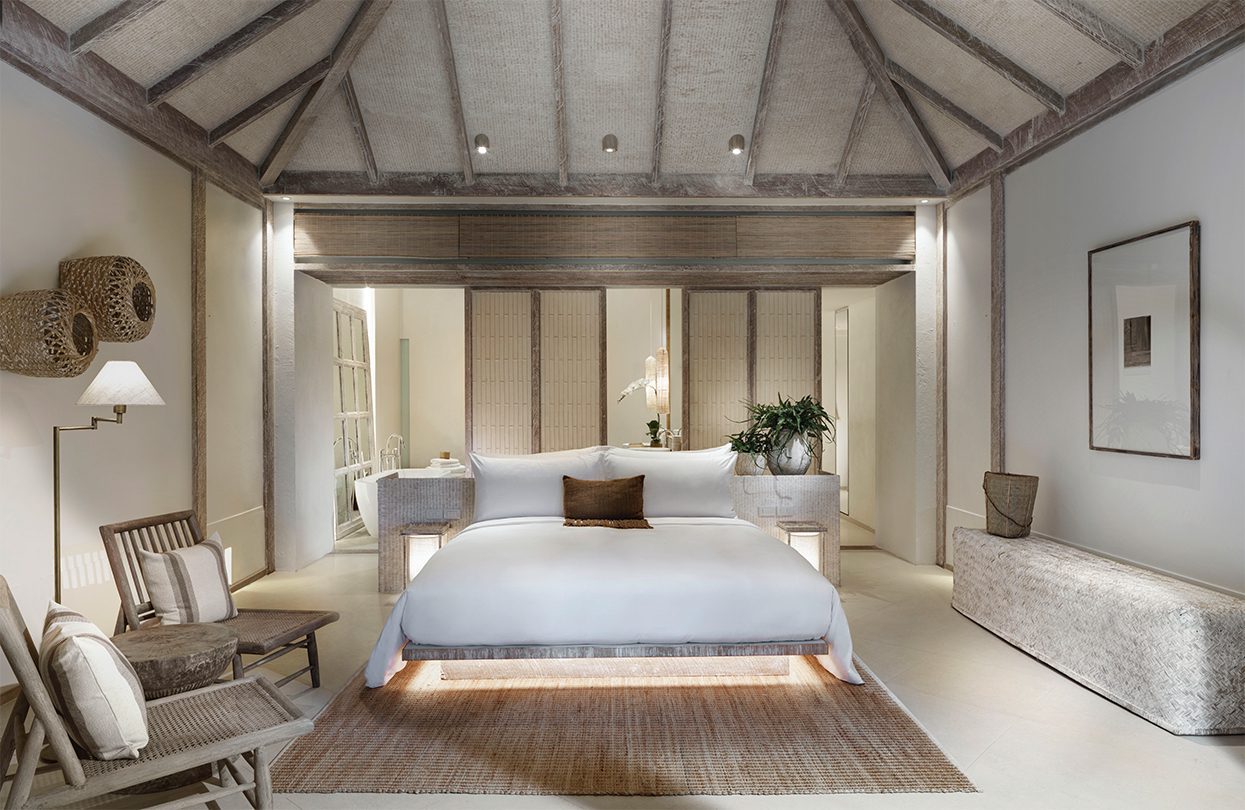
Raya Heritage Huen Bon Suite Interior
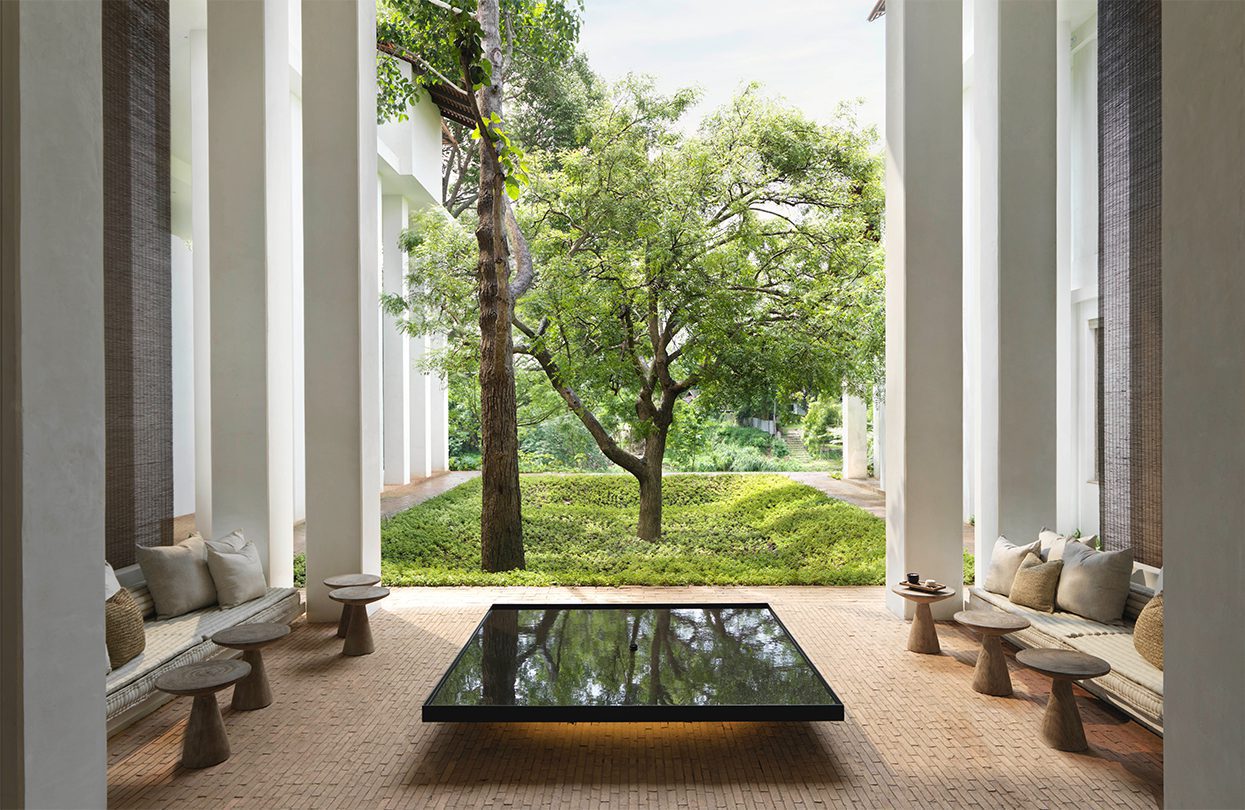
Raya Heritage Entrance
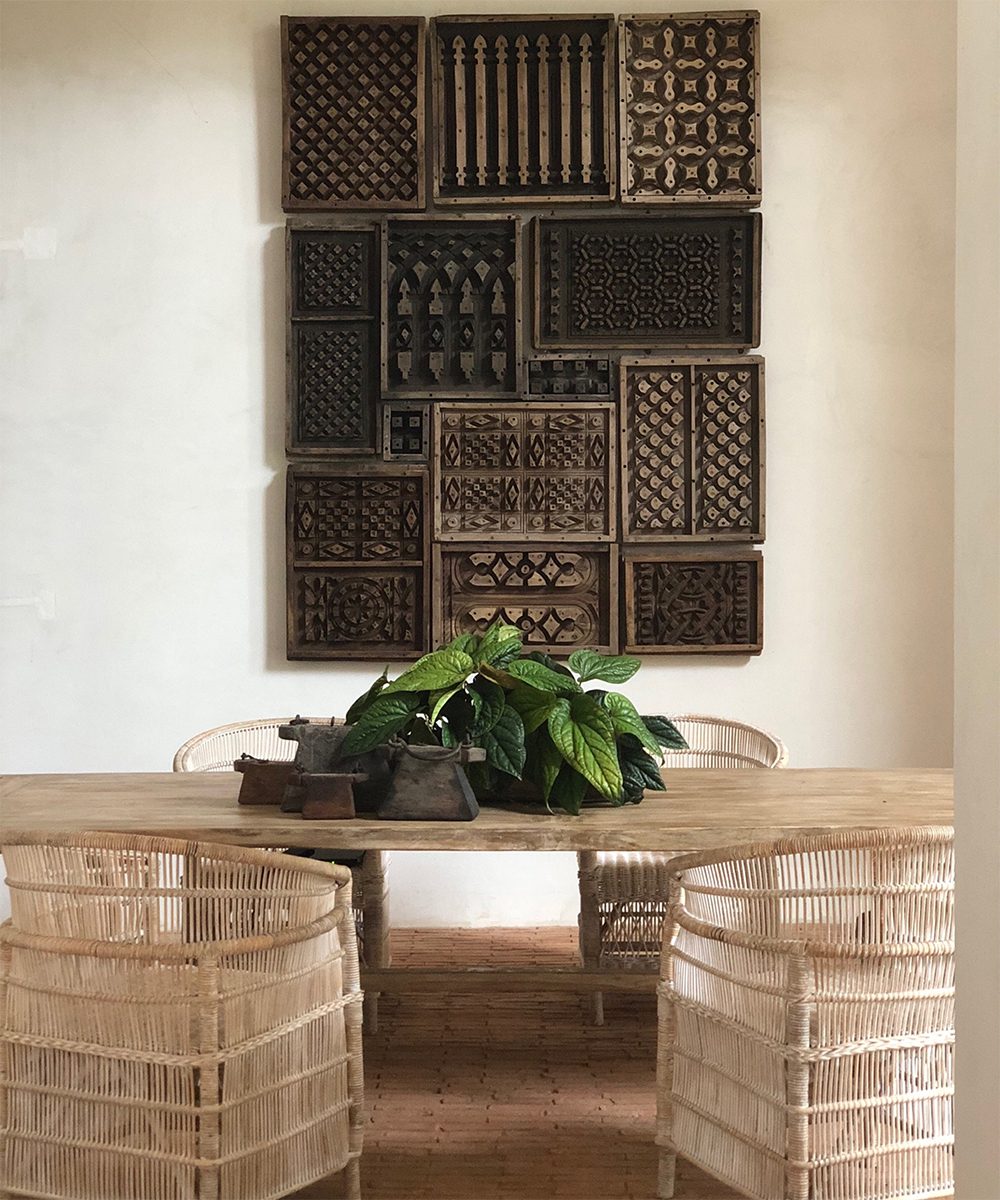
Raya Heritage Reception Area
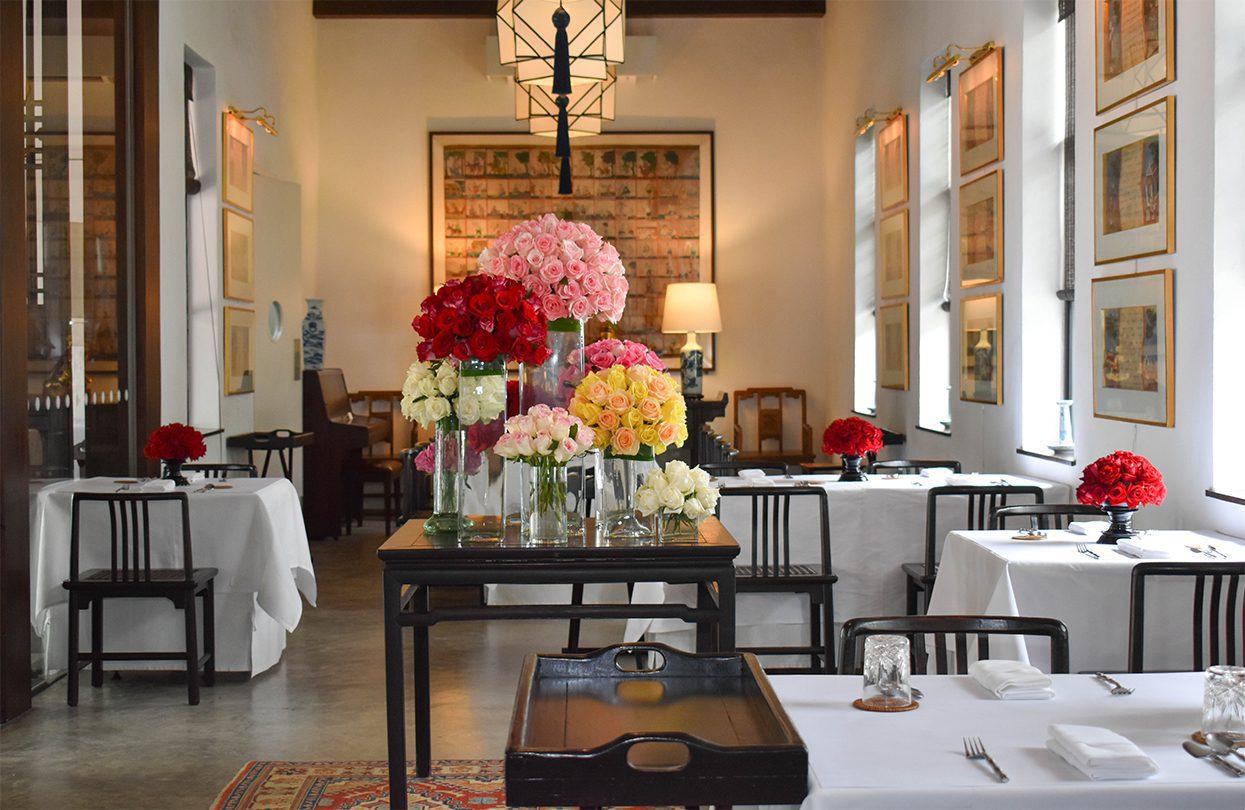
Rachamankha’s elegant dining room features art work from the owner’s private collection
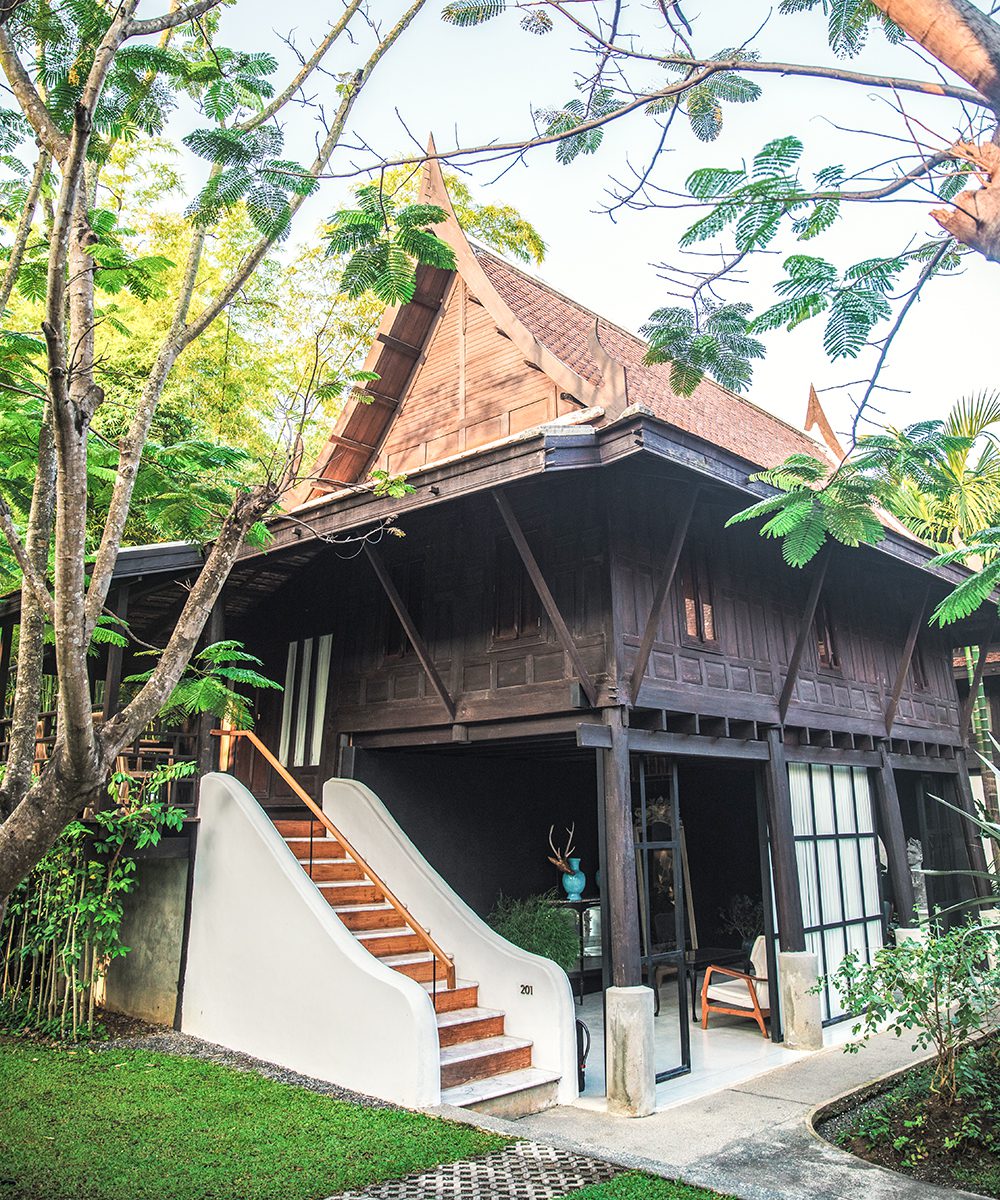
Several of the traditional villas at Mahabhirom have been transformed to include an outdoor living space
Where to stay
Every room in at Raya Heritage, an all-suite property that looks over the Ping River, is a showcase for northern Thai arts and crafts, from the locally woven fabrics to elegant woodwork. A beautifully curated gallery space includes a video of local artisans proudly reflecting on the work that they produced for the hotel. The varied menu at Khu Khao, the hotel’s restaurant, reflects Chiang Mai’s unique blend of Thai, Burmese, Lao and Yunnan cultures.
Maha (great) bhirom (pleasure) is what awaits visitors to Villa Mahabhirom, a collection of stunning wooden Thai houses tucked away behind an easy-to-miss entrance. Each villa is raised on stilts in the traditional manner, though some feature lounge areas on the ground floor under the raised house where in days gone by families would go about their chores, chat with neighbours or rest in the shade. Three of the villas built around a courtyard within the compound share a plunge pool and can be separated from the rest of the property by a gate for additional privacy. Around every corner, visitors can enjoy the owners’ eclectic art collection, from the painting and sculptures of local artist Thongma to a classic polychrome pietà.
What Rachamankha offers is the luxury of space right in the middle of the old town. With just 25 rooms set on two acres of land, guests can close their eyes and imagine they are in their own private estate. If they can bear to leave one of the three 100-square metre suites, they can curl up in the library with a brandy and a book or stroll through the owner’s private collection of antiques, wall hangings, ceremonial swords, and intricate inlay lacquerware. Guests can also benefit from the exclusive service around town by booking bespoke tours with the hotel’s partner Secret Retreats who provide a personal guide, as well as bookings at exclusive restaurants and a visit of the city in a samlor (peddle bike rickshaw). ◼
Subscribe to the latest edition now by clicking here.
© This article was first published in Aug-Sept 2019 edition of World Travel Magazine.

